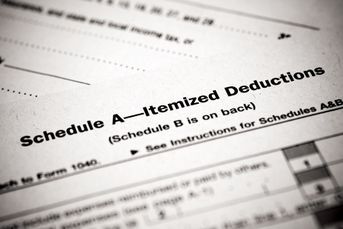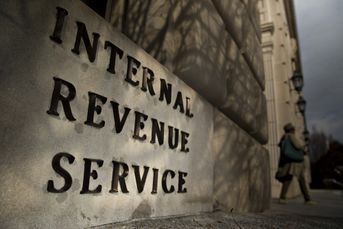Help clients manage tax payments during the year
Tax projections at this time of year will tell individuals their total tax liability for 2016, but that doesn't necessarily mean it all has to be paid before the end of the year..
This time of year, many taxpayers are reviewing their income and deductions to see if there is anything that can be done to reduce their federal tax bill for 2016. After making those last few charitable donations, maximizing retirement plan contributions and netting capital gains and losses, they find they’ve done all they can for the year, and now it’s time to pay the piper.
Or is it?
Tax projections at this time of year will tell individuals their total tax liability for 2016, but that doesn’t necessarily mean it all has to be paid before the end of the year. The best advice to give your clients this time of year: Pay as little as you have to now to avoid a penalty, but then wait to pay the balance when you file your tax return.
REQUIRED ANNUAL PAYMENT
Taxpayers have two options for determining their required annual payment, the amount of tax that must be paid before the end of the calendar year in order to avoid a penalty — either 90% of their actual liability for the current year or 100% of the liability for the prior year. If a taxpayer’s prior year adjusted gross income was more than $150,000, the 100% becomes 110%, although the 90% option remains available. As long as the taxpayer’s payments exceed one of those two targets, it doesn’t matter how much is owed when the tax return is filed — there won’t be an underpayment penalty.
Taxpayers whose income is nearly all subject to withholding, such as wages or commissions, usually exceed the 90% of current year threshold. Where it becomes harder to meet that target is when they have significant income that is not withheld on, including income from self-employment, rental properties or pass-through entities such as S Corps or trusts. This also includes investment income, such as interest, dividends and capital gains.
So what about the client whose wages are withheld on, but who also realizes a large capital gain during the year? Do they need to pay the tax on that gain before year-end? It depends on the size of the gain.
If the gain is large enough that their withholding no longer exceeds 90% of their current year liability, then perhaps. However, that employee still has the 100% of prior year liability target (or 110%, if applicable). As long as their withholding exceeds that target, the tax on the gain can be deferred until the tax return is filed.
If the employee’s withholding doesn’t reach either level, then they’ll need to either increase the withholding on their income for the rest of the year, or make a separate estimated payment to the IRS.
PENALTY CALCULATION
While an estimated payment can be used to get a taxpayer to the required payment amount, it can’t be used to minimize withholding during the year and then catch up to the target at year-end. That’s because the required annual payment is determined on a quarterly basis. If the payments at the end of each quarter are less than the required payment (either of the two targets, whichever is less), the taxpayer has underpaid and a penalty is assessed. The annual penalty rate was 3% of the underpaid amount for the first quarter of 2016, and then 4% for the rest of this year, and is calculated on IRS Form 2210.
The default penalty calculation assumes that income is earned evenly throughout the year, meaning tax payments should also be made evenly. In cases where income spikes late in the year, perhaps due to a capital gain, clients can use a technique called annualized income. This technique allows a taxpayer to make payments based on their income as it’s earned, rather than evenly. As a result, a taxpayer can base their payments on current year income for the first three quarters of the year. If a large gain occurs in the fourth quarter, they can make an extra payment to meet the 90% threshold or switch to the prior year liability option if that’s lower.
While this discussion applies to federal tax, most states follow similar rules. In both cases, you should work with your clients to find the right balance between avoiding penalties and maintaining access to their money as long as possible.
Tim Steffen is director of financial planning for Robert W. Baird & Co. Follow him on Twitter @TimSteffenCPA.
Learn more about reprints and licensing for this article.








